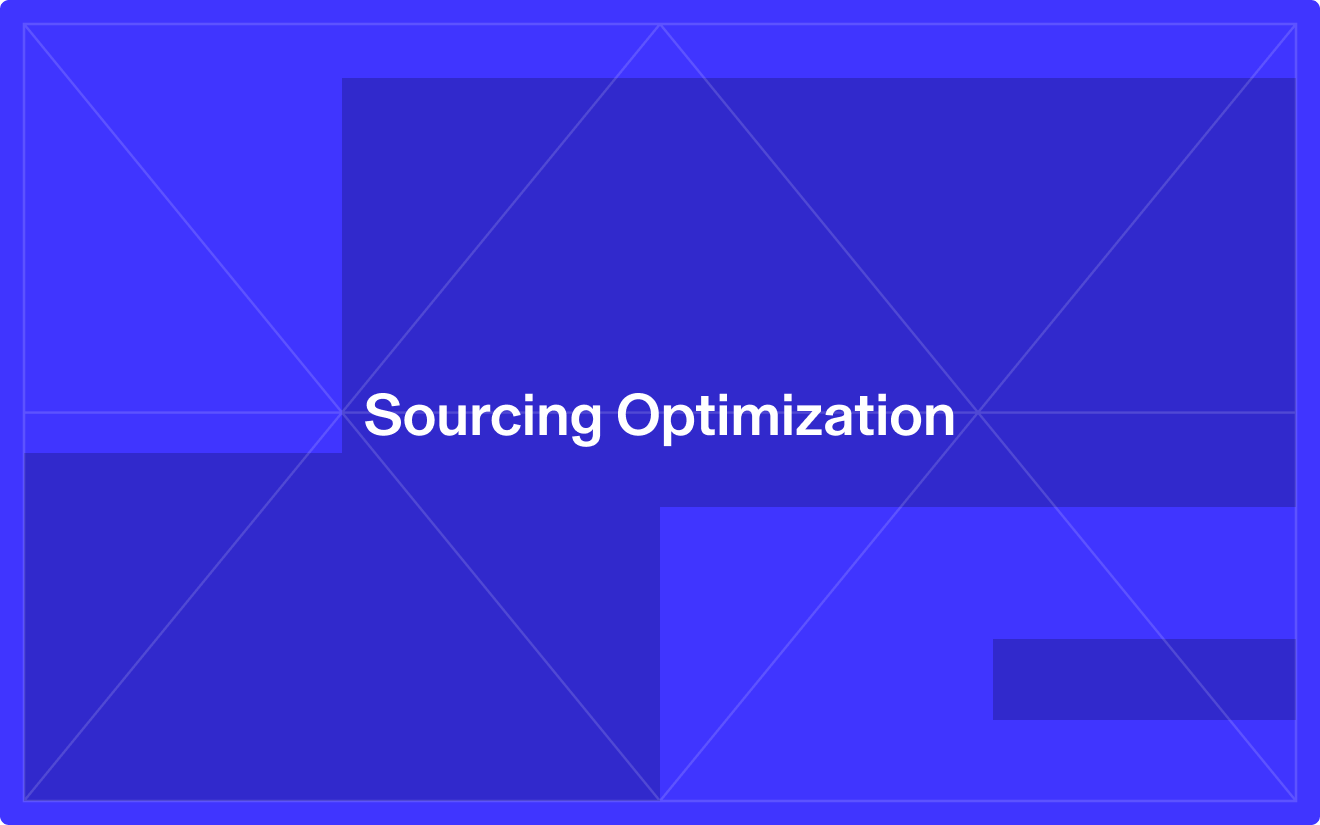Sourcing Optimization in Indirect Procurement

Sourcing Optimization in Indirect Procurement
The digitalization of Procurement is evolving rapidly. While eSourcing and eAuctions are still not commonplace, new cloud-based sourcing tools drive added value through advanced mathematical modelling and scenario building. These tools are the first step towards automated sourcing and are commonly referred to as ‘advanced sourcing’ or ‘sourcing optimization tools’.
Our blog series & the white paper ‘A beginners guide to Sourcing Optimisation’ provide an easy introduction to the topic and explain the defining characteristics and opportunities offered by the technology. We also hosted a webinar to explain our understanding of the market and the technology. As part of the feedback, many have highlighted the absence of broadly known use cases in indirect spend categories. We therefore dedicate this blog post and some deep dives on Marketing, Professional Services, IT, and MRO & CAPEX to explore relevant use cases in Indirect Procurement.
Sourcing optimization offers features above and beyond standard RFx capabilities that are especially relevant for sourcing events with many line items, input factors and/or suppliers. While these traits are applicable to all commodities, these tools offer new opportunities, especially in more complex Indirect spend categories like IT, Professional Services, Marketing, Facility Management or MRO.
Here’s the highlights:
· ‘Sourcing Optimization’ calculates optimal award allocations under consideration of holistic decision criteria or evaluations matrices
· Sourcing Optimization is especially valuable for indirect categories, where soft factors and stakeholder preferences play a critical role
· Advanced sourcing tools enable indirect sourcing managers to increase speed to market, create price databases, and leverage insights from past events
Sourcing Optimization in Indirect Procurement
‘Sourcing Optimization’ describes the calculation of optimal award allocations under consideration of holistic award criteria (e.g., internal business constraints and preferences or external limitations such as capacity constraints of suppliers) using linear mathematical optimization. Infinite combinations of input factors (suppliers, restrictions, performance scores, etc.) can be processed and incorporated in customized award scenarios to highlight available options and their opportunity costs, often unlocking substantial savings potentials. Sourcing optimization reflects changing constraints and proposal updates in real time, which enables instant event analysis and holistic decision making.
These features can be especially helpful in indirect spend categories where soft factors play an important role and cost is rarely the only decision factor for procurement teams. While sourcing events can be designed in a flexible a way with an infinite number of input fields, these additional decision factors can also be incorporated into category-specific event templates to drive standardization across the business. Alongside information on preferred suppliers for different geographic locations or specific award scenarios that need to be considered, this ensures category strategies and decision making are consistently applied across global and local teams.
With all information related to the sourcing process being available for event analysis, the decision process becomes more fact-based and holistic, instead of binary as in Excel-based analysis. Sourcing managers can utilize RFI inputs, supplier scores (quality, sustainability, risk, diversity, etc.) next to discounts, preferences and handicaps in determining the true Total Cost of Ownership. This enables sourcing managers to have more meaningful conversation with stakholders, improving Procurements' overall credibility and increasing the trust in the sourcing process.
Applying sourcing optimization in Indirect spend categories
Service related spend categories usually consist of mostly people related labor costs. Cost breakdowns are therefore often a mix of hourly rates, the number of hours required to perform a service, an overhead and/or profit contribution, and third-party cost elements.
On the other hand, indirect spend categories cover a variety of products or capabilities that are needed to perform the services or keep the business running, from IT equipment to office furniture and Marketing collateral. These are usually defined by detailed specifications and come in multiple options around quantity, quality, and features. Cost breakdowns often contain unit costs for the material, delivery costs and mark-ups.
Complex structures and matrices make an Excel-based analysis cumbersome and error-prone. Especially as project scopes fluctuate and multiple tender rounds require scope amendments, advanced sourcing tools can increase the speed to market with updates being published, collected, and analyzed in real-time. This responsiveness represents a real competitive advantage due to the reduced time to market it offers.
Besides the ability to structure and analyze information in a more usable format, advanced sourcing tools support the creation of holistic data bases that capture cross-country and cross-event information. They enable advanced analytics, without the risk of compromised data files or insufficient access rights and can therefore be the single source of truth for many commercial information. Eliminating data silos like PPT, Excel and share point and using standardized data collection methods allows sourcing managers to leverage insights from past events in their negotiations and sourcing decisions instead.
With Indirect portfolios spanning a wide variety of different services and complexities, some relevant use cases we have seen in this context include:
Rate Cards
Tendering hourly rate cards across seniority levels or roles, geographic locations and disciplinary focus can be easily supported in a single event. A rate card repository can act as the single point of truth for easy quote comparison, offering visibility and access on a need-to-know basis. This is highly relevant for Marketing, Consulting, IT and Legal services.
Asset or Output Pricing
Tendering clearly defined assets or qualitative outputs based on individual rate cards and effort assumptions can be quite messy in standard sourcing tools or Excel. With sourcing optimization, assets can be tendered, analyzed, and negotiated with ease. Again, the tool can act as a central database that can be updated periodically, building the foundation for downstream catalogue items.
Scopes of Work
SOWs are often a combination of clearly defined tasks that require inputs on a granular level for roles, rate cards and required hours. On top, these usually require a fair amount of secondary information to derive the true winner of the tender. Keeping track of all changes throughout the process, identifying the price drivers, and incorporating soft factors into decision making can be easily supported with flexible category templates. This drives consistency and harmonization across the process, from requesting the appropriate suppliers to identifying the best value for the organization.
Marketing collateral (Print, Point of Sale Materials & Promotional items)
Tenders for Print, Point of Sales Materials &Promotional Items and associated equipment can easily include hundreds of items with various specifications across multiple delivery locations. These tenders on a local level bear their fair share of complexity. Running regional or global level tenders is simply an overwhelming task if you only have Excel to support you, especially considering you face multiple volume brackets and changing demands. Cost breakdowns can therefore include item costs, delivery costs, customization costs and a variety of bundling options and discounts. The extensive supplier base with varying specializations adds to the complexity of these categories.
Facility Management Services
Facility Managementtenders need to cover a wide array of different services covering cleaning, security, catering, janitorial and front desk services with the need for a variety of related products and consumables. These services are labor intensive and often differ across sites, which introduces an additional layer of complexity. With services being sourced regionally or globally only adds to the challenge. Flexible bid sheets combined with advanced analytics, a variety of static and live feedback options as well as the ability to model award scenarios based on factors beyond cost make FM a very suitable category for sourcing optimization.
IT Hardware & equipment
IT Hardware including infrastructure equipment, spare parts, devices, and peripherals come in large number of options, qualities, and detailed specifications. Tenders often span multiple sites or geographies with local specifics. While specifications are often very detailed, they ignore the abundance of different options (e.g., brand, color, features) that could also fulfil the requirements. Expressive bidding features alongside real-time analytics can ensure organizations have a full overview of their potential award options. Scenario modelling enables easy comparisons of possible award scenarios on a site, country, regional or global level.
MRO & CAPEX
From machinery, equipment and construction to electrical or mechanical spare parts, consumables or Personal Protective Equipment, Procurement of MRO & CAPEX faces tremendous complexity due to the large numbers (thousands!) of items that are usually required. With an open market that knows many suppliers and differing technical specifications across them, analyzing tenders can be difficult. With sourcing optimization in MRO & CAPEX, different award strategies can be quickly created and compared. Sourcing managers can easily optimize on price including bundles and discounts or on the overall allocation across suppliers, ensuring a good understanding of their options.
While Procurement teams have historically started using sourcing optimization in Packaging, Logistics or Raw Materials, Indirect spend categories and complex services with multi-national or multi-disciplinary tenders can benefit from increased efficiencies, data analytics, and scenario-based thinking in the same way. Applying sourcing optimization can drive consistency and standardization, while ensuring discussions with internal stakeholders and suppliers are data driven and objective. This improves business relationships and creates savings opportunities for the organization.
You can find more detailed insights on how to apply sourcing optimization in our category focused 2-pagers. Please reach out in case you’d like to discuss potential use cases or learn more about how optimization can be applied in the discussed categories.


